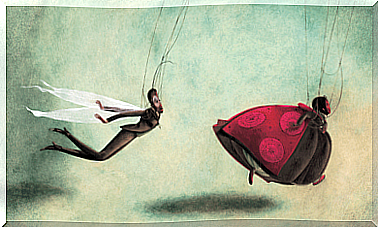The Challenge Of Working With A Person Accustomed To Using Violence

We have all known that person who is surly, rough in ways and relates to the world with his fists. Violent in forms and ways, and that is distributing threats to one side and the other. He is easily identified because it seems that the storm is with him. Thus, the constant clouds in your sky are the premonition of violence.
He does not evade conflicts because he sees in them the opportunity to achieve what he wants, it can be money, being above the other or anything else. In the case of being above the other, it is your insecurity that speaks loudly to you, asking for constant proof of your value. Some doubts that generate an anxiety that eats you inside and that only knows how to calm down in that way.
The thug who dreamed of a place in paradise
Jonas Jonasson wrote in “The bully who dreamed of a place in paradise” the story of a somewhat peculiar bully. In a passage in the book, he reveals to us what happens “behind the scenes” in people who are used to this type of behavior patterns. Said literary clipping goes like this:
“[…] What they didn’t know was that the Assassin Anders had been experiencing a growing sense that life had no meaning. That was something new to him. He had always reasoned with others through his fists, but it was not easy to talk to himself that way. That is why he took refuge in alcohol, each time earlier and with greater determination […] “
If the way of the Nordic writer stands out for something, it is by hiding, behind the acid humor that he uses to describe the fate of his characters, natural and consistent personalities. For those who are curious, we encourage you to have a fun time with the complete reading, but for this article we are not going to stop here.
Anders is a man of the type we described in the introduction, rude and violent. Used to slapping the world. In this case, he does not do it to be above anyone, but because it is his profession. The problem is when he has to talk to himself, since as he does not know any other way, he does it in the same violent way. Thus, paradoxes of life, he becomes the first victim of his inability to relate.

There are people who, without being murderers, share this problem with the character of Jonas. They are incapable of giving love, but they are also incapable of giving it to themselves. They miss it, terribly, but they have not learned to live with emotions and feelings. Thus, both their own emotions and those of others are seen as a threat that they have to remove as soon as possible. They do it using the only language they know: violence.
It does not have to be physical violence, in fact in most cases it is not. We are talking about verbal violence, which is present in dialogues with others, but also in their internal dialogues. Therefore, the best help we can give these people are instruments that keep violence out of their way of expressing themselves.
How do you work with people relate to violence?
First of all, as specialists, motivators and reinforcers of change we have to believe that this change is possible. Second, complicity in the process of the person with violent behaviors is necessary. We are never going to be able to change someone who doesn’t want to. In fact, if we try to manipulate him and he realizes it, what we can achieve is the opposite effect, so that the person closes himself in his way of acting to defend his independence.
Thus, in this type of process, there is often a previous phase in which the specialist does not focus on change, but rather on the person perceiving the need for said transformation. On the other hand, once they have seen it, it is just as important -before intervening- that the person wants our help and gives us the role of authority figure in the management of that change.
Second, you have to be aware of something that they do automatically: use violence. They have been doing it for so long that they do not realize it, that they incorporate it into their way of acting as we can use the typical fillers. It is important that the person realizes that he is being violent when he is violent, not later when he appreciates that the consequences are disastrous.

If the violent person’s environment is conducive to change, it is good that we also work with them to help us recognize and reinforce achievements. We have to explain to them, for example, that going from threats or blackmail to petitioning is a big step and that assuming one is not another.
On the other hand, if there is a part of the environment that is against change and that reinforces violent behaviors, it is best for the person who wants to change to move away from that environment. Later, when the change is established, although there will still be a risk of relapse, the person will already be able to see the distance between the before and after and decide which path they want to take.
Another important point of the intervention is to influence the natural consequences of the behavior. Many people realize that they have used violence when they see the harm reflected in the other. Thus, the absence of this damage and even the presence of positive emotions in the other are one of the main real references, which we can give to the person who is in the process, of the results of the transformation they are experiencing.
Finally, we wanted to say that there are violent people who find pleasure in their way of acting, in the suffering of the other and even in their own. This article is not focused on them, since in these cases the ways of working are very different. In this article we have talked about those people who by being violent do not stop suffering internally because of the way they behave and relate to themselves.
If you liked this article and you are especially interested in this topic, we leave you one that we did some time ago about violence in the family context.
Photo courtesy of Marion Peck









